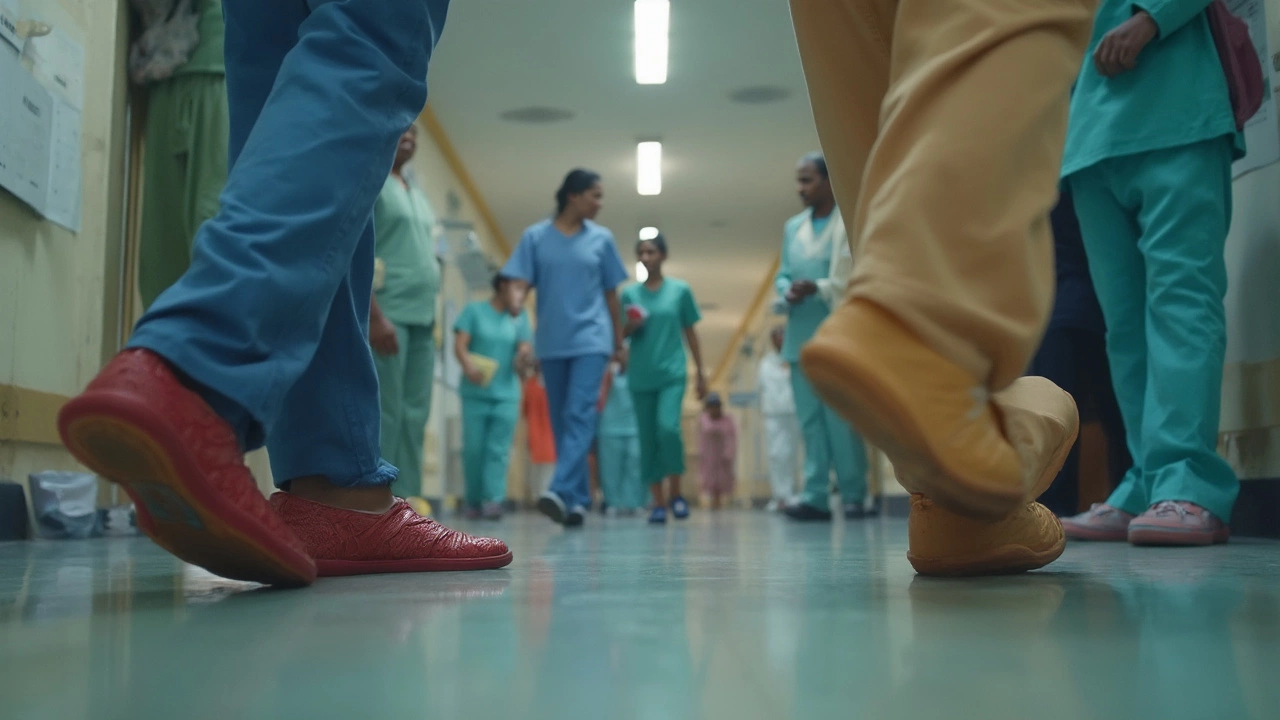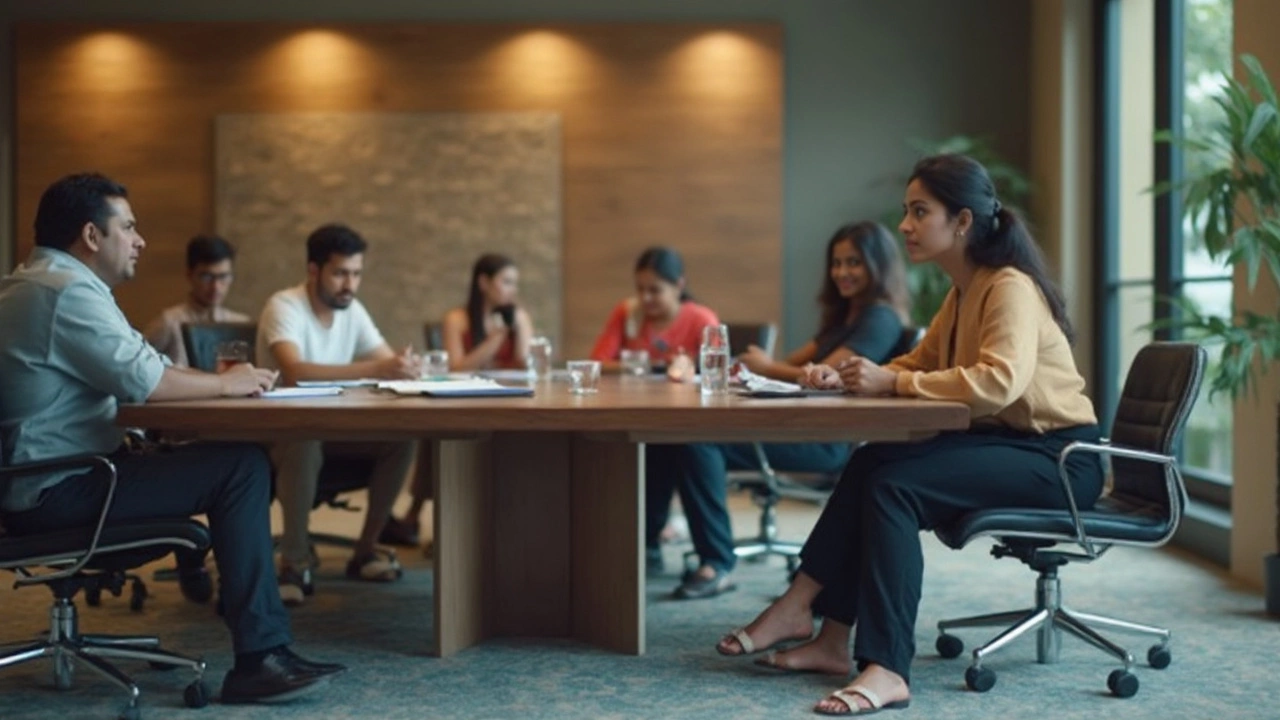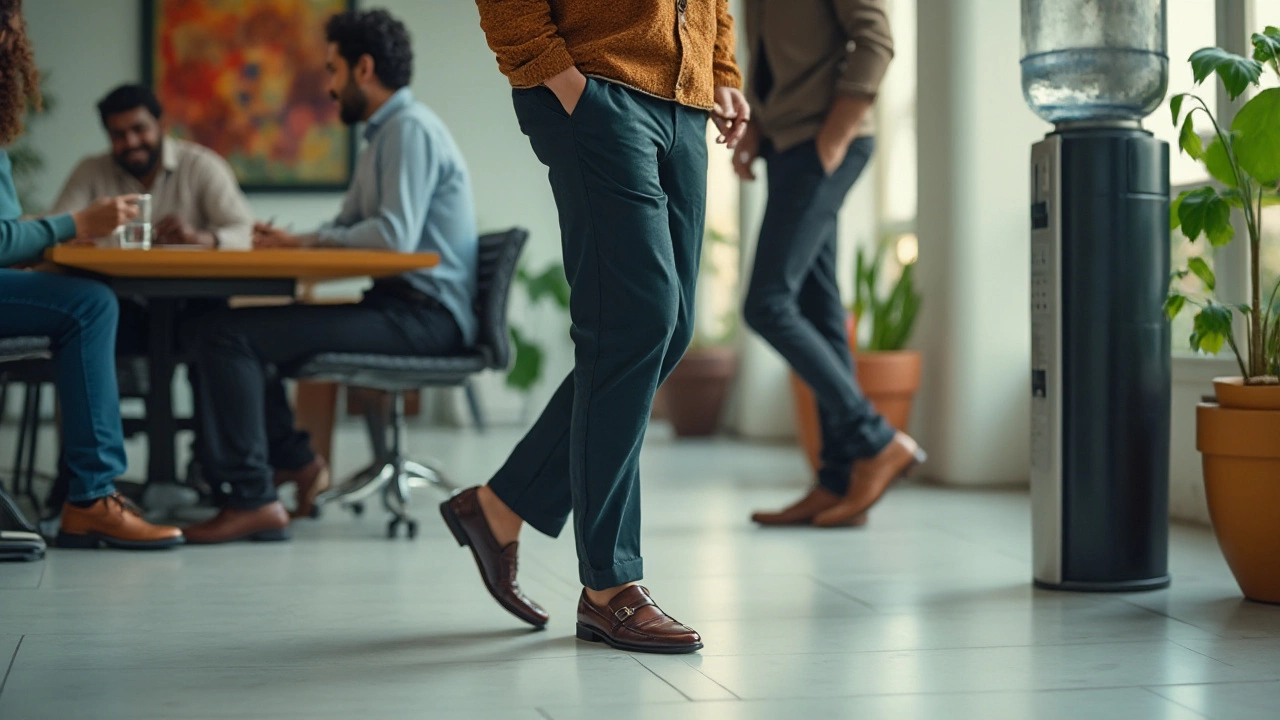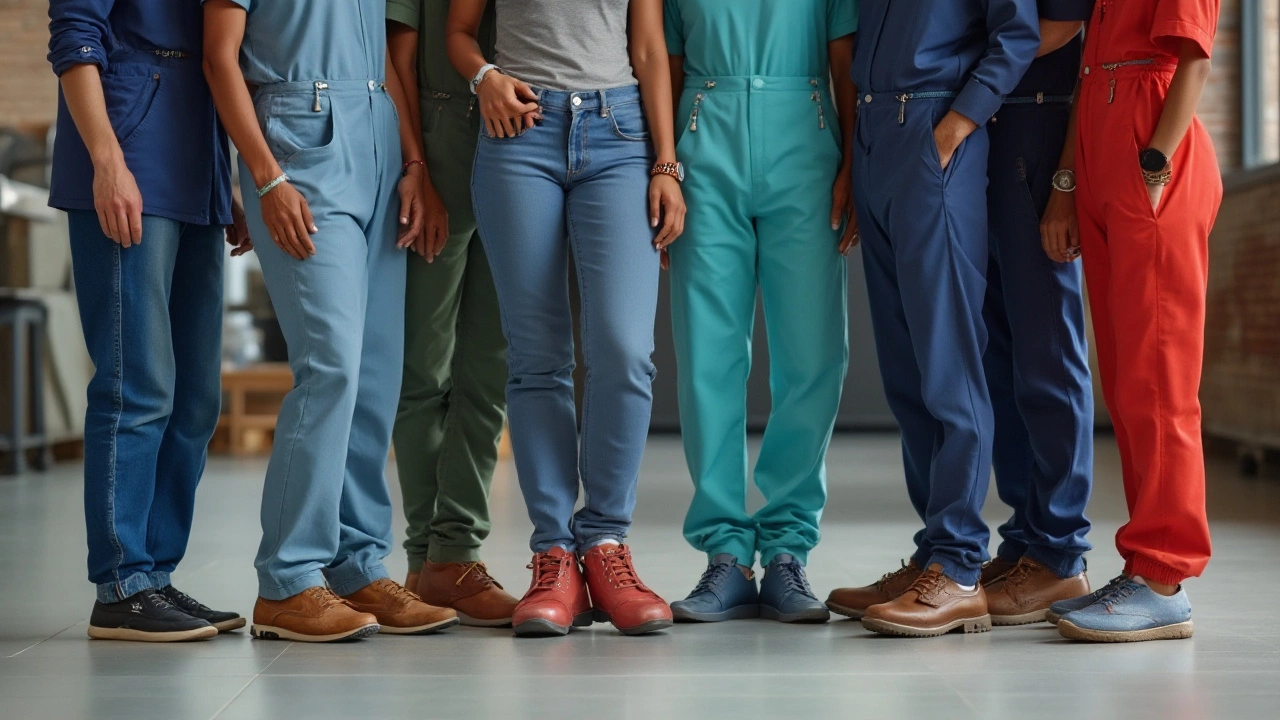Work Shoes: Comfort, Support, and Style for Daily Wear
When you're on your feet all day, work shoes, footwear designed for durability, support, and safety during long shifts. Also known as professional work footwear, they're not just about looking neat—they're about keeping your body safe from fatigue, pain, and injury. Unlike casual sneakers or fashion boots, real work shoes are built with specific needs in mind: arch support, shock absorption, slip resistance, and breathable materials. If your job means standing on concrete, walking long distances, or lifting heavy things, your shoes aren't optional—they're your first line of defense.
Not all leather work shoes, durable footwear made from high-quality leather that molds to the foot over time are created equal. Some brands like Ecco and Clarks focus on medical-grade cushioning for people with plantar fasciitis or swollen feet, while others prioritize lightweight flexibility for warehouse workers. Then there are orthopedic work shoes, shoes designed with extra width, deep toe boxes, and removable insoles to accommodate medical needs. These aren’t just for seniors or people with diagnosed conditions—anyone who spends 8+ hours on their feet can benefit. The right pair can stop foot pain before it starts, reduce lower back strain, and even improve your posture.
It’s not just about what’s inside the shoe—it’s about how it fits. A shoe that’s too tight causes blisters. One that’s too loose leads to instability and tendon strain. That’s why knowing your true foot size matters more than ever. Many people wear shoes a half-size too small because they think their feet won’t grow after 25. They do. And they change shape with weight, age, or even pregnancy. The same goes for leather: wet or dry, it behaves differently. Proper care keeps your work shoes lasting longer and performing better.
What you’ll find in this collection aren’t generic lists or ads for the latest trend. These are real, tested insights from people who’ve stood all day, walked miles, and still needed their feet to hold up. You’ll learn how to spot if your boots are too big, why Chelsea boots hurt more than they should, how to rescue water-damaged leather, and which brands actually deliver on comfort—not just marketing. Whether you’re a nurse, teacher, factory worker, or retail staff, the right work shoes don’t just make your day easier—they make your body last longer.

Work Shoes to Reduce Fatigue from Standing All Day
Standing all day can wreck your feet, knees, and even your mood. The shoes you wear make a bigger difference than most people realize—they can leave you dragging by lunch or actually help you survive a long shift. This article breaks down what kind of shoes actually help with fatigue and which features to look for when shopping. You'll also find tips on when to replace your shoes and how tiny changes can make a big impact. No fluff, just the straightforward info you need to stay comfortable on your feet.
- posted by Elliot Marwood
- 4 June 2025
- Comments [ 0
]
-
Work Footwear
more

How Do You Survive a 10 Hour Shift on Your Feet? Work Shoes Make or Break It
Spending 10 hours on your feet can feel brutal if you don’t plan ahead. This article breaks down simple tactics to protect your feet, ease your body, and actually make long shifts bearable. Discover why your work shoes matter, what features make them winners, and how little habits during your shift can save you from pain. If blisters and sore ankles are your enemies, you’ll find practical hacks and science-backed tips that actually help. Comfort isn’t just a bonus—it’s the foundation for surviving a long workday.
- posted by Elliot Marwood
- 21 April 2025
- Comments [ 0
]
-
Work Footwear
more

Is Being Barefoot a Health Code Violation?
Exploring whether it's a health code violation to be barefoot, this article provides insight into safety regulations at workplaces. It covers potential risks, legal requirements, and safety tips to ensure a healthy work environment. Discover the surprising rules around being barefoot and learn how to navigate workplace safety codes effectively.
- posted by Elliot Marwood
- 20 March 2025
- Comments [ 0
]
-
Work Footwear
more

Why Podiatrists Warn Against Skechers for Work Shoes
Skechers may be popular for their casual comfort, but podiatrists have some reservations when it comes to recommending them for work shoes. The worry mainly revolves around foot health due to concerns about arch support and durability. By understanding the reasons behind these hesitations, you can make better choices for your footwear, especially if you're on your feet all day. This article outlines the factors to consider and offers tips on selecting the best shoes for your work environment.
- posted by Elliot Marwood
- 9 March 2025
- Comments [ 0
]
-
Work Footwear
more

Open-Toed Shoes at Work: Professional or Faux Pas?
Deciding whether open-toed shoes are acceptable at work can be a tricky business. It often depends on the office culture and the nature of your job. While some workplaces might welcome this relaxed style, others might frown upon it. Understanding the context and expectations of your work environment is key. Employees should always aim to strike a balance between personal comfort and professional appearance.
- posted by Elliot Marwood
- 19 February 2025
- Comments [ 0
]
-
Work Footwear
more

Best Shoes for Office Comfort and Style in 2025
Choosing the right shoes for work can be a real challenge with so many options and workplace dress codes. This article delves into the kinds of shoes that are deemed appropriate in different office environments. Read on to discover how to combine style and comfort while adhering to company policies. Get tips on what to consider when shopping for your next pair of work shoes.
- posted by Elliot Marwood
- 28 January 2025
- Comments [ 0
]
-
Work Footwear
more

Mastering Comfort: Surviving a 12-Hour Shift on Your Feet
Surviving a 12-hour shift on your feet requires strategic planning and a focus on comfort. Choosing the right footwear can significantly impact your endurance and well-being during those long hours. Understanding your body's needs, from hydration to taking strategic breaks, plays a critical role. Incorporating these strategies can improve both productivity and job satisfaction, making those extended shifts more manageable.
- posted by Elliot Marwood
- 25 December 2024
- Comments [ 0
]
-
Work Footwear
more






